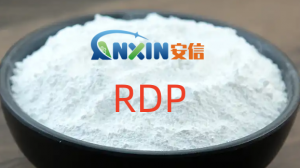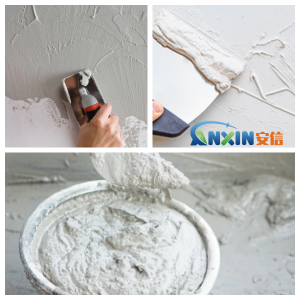Redispersible polymer powder (RDP) is a type of polymer powder additive made from a polymer emulsion through spray drying. Its core characteristic is its ability to redisperse into a stable polymer emulsion upon contact with water, thus performing a modifying function similar to that of a liquid emulsion in various dry-mix mortar systems. The introduction of RDP has significantly improved the workability, adhesion, and durability of building materials, making it an indispensable key component in modern dry-mix mortar and tile adhesive formulations.
1. In terms of performance characteristics, RDP exhibits excellent redispersibility and film-forming properties. When stirred with water, RDP powder rapidly disperses to form uniform emulsion particles, and during the drying process, it forms a continuous, dense polymer film. This polymer film effectively bonds inorganic aggregate to the substrate surface, improving the material’s bond strength and flexibility. The film layer also possesses a certain degree of elasticity, absorbing stress differences between the base and top layers, preventing cracking and shedding.
2. RDP can significantly improve the workability of mortar. Adding an appropriate amount of RDP significantly improves the mortar’s water retention, fluidity, and lubricity, enabling smoother and more even application while reducing bleeding and delamination. Furthermore, RDP enhances the mortar’s anti-sagging and anti-powdering properties, making thick-layer application more stable. For tile adhesives, RDP strengthens the bond between the tile and the substrate, ensuring long-term adhesion stability.
3. In terms of durability, RDP exhibits excellent crack resistance, freeze-thaw resistance, and weathering resistance. The polymer film acts as a barrier to moisture and gases, reducing the ingress of external moisture and thus slowing mortar aging. Even under hot and cold cycles or in humid environments, RDP-modified materials maintain high strength and adhesion, which is particularly important for exterior wall insulation systems and repair mortars.
4. Chemically, RDP is typically a copolymer of different monomers, such as vinyl acetate-ethylene (VAE), acrylates, and styrene-butadiene. The different types of polymers determine the balance between flexibility, water resistance, and adhesion. VAE-based RDPs are the most widely used due to their excellent overall performance. Acrylate-based RDPs are renowned for their excellent weather resistance and flexibility, making them suitable for high-end exterior wall materials. Styrene-butadiene-based RDPs are often used in systems requiring high elasticity and abrasion resistance.
5. In practical applications, RDPs are widely used in formulations such as tile adhesives, exterior insulation systems (EIFS), self-leveling mortars, repair mortars, plaster mortars, waterproofing mortars, and interface agents. For example, in tile adhesives, RDPs significantly improve both dry and wet bond strength and anti-slip properties; in insulation mortars, they enhance the system’s flexibility and crack resistance; in self-leveling mortars, RDPs improve flow and reduce powdering; and in waterproofing mortars, they enhance impermeability and elongation, strengthening their protective properties.
6. Through its excellent polymer film-forming properties and synergistic effect with inorganic substrates, RDP significantly enhance the performance of dry-mix mortar systems. It not only optimizes the construction experience but also imparts greater durability and adaptability to materials, making it a key additive for achieving high performance and stability in modern building materials. With the continuous development of green building materials and high-functional dry-mix systems, RDP technological innovation and application scope will continue to expand, becoming a key direction for future functional building materials.
Post time: Oct-17-2025

